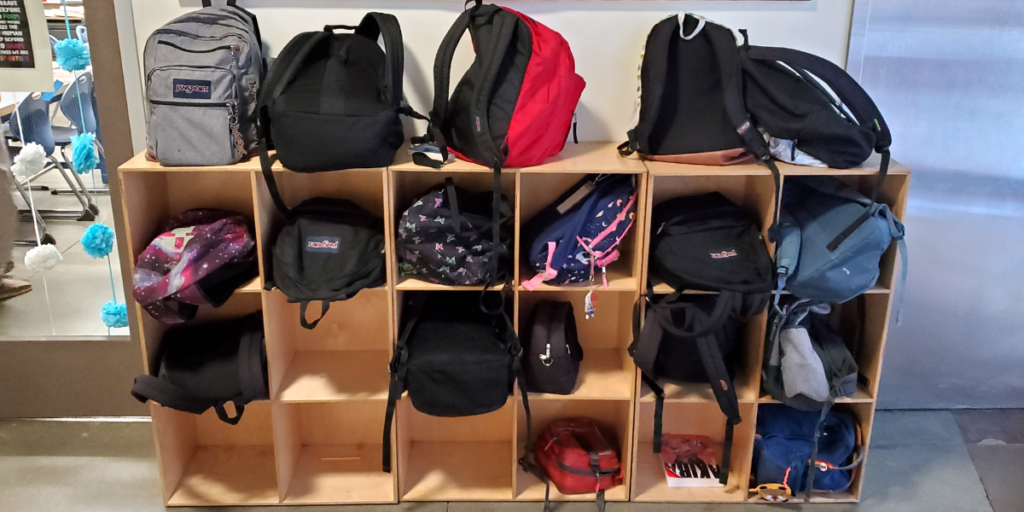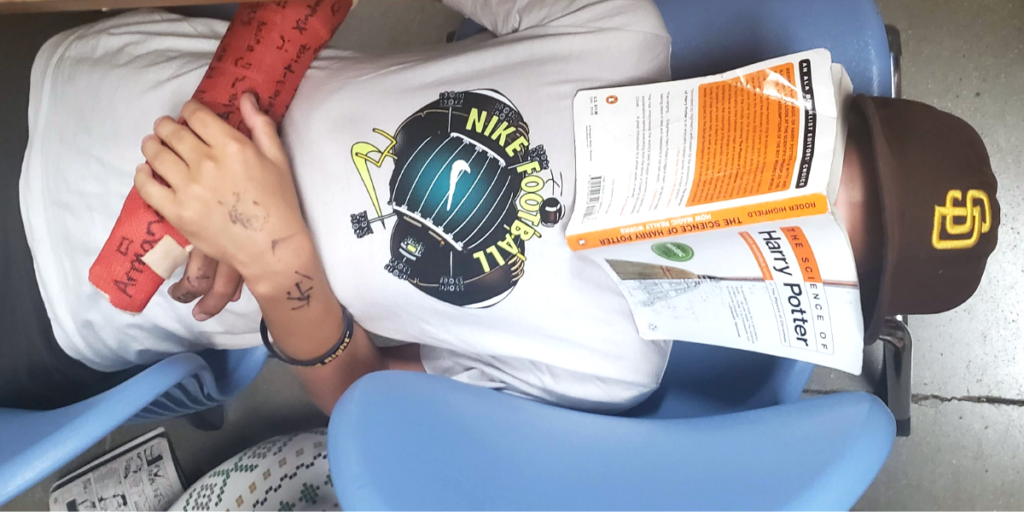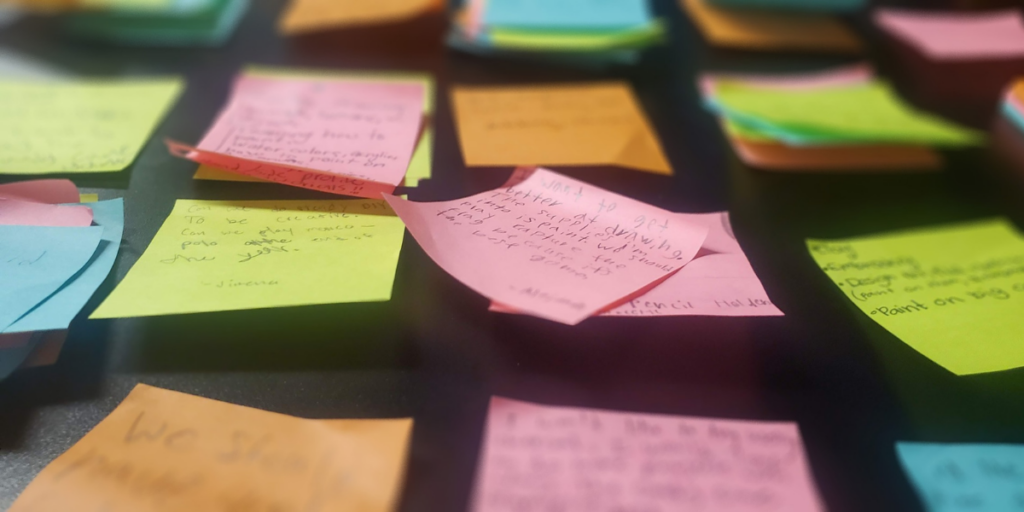Greetings, brave middle school art teachers! We took to social media and asked for your honest answers regarding what is most challenging about teaching art. You wrote in with humor, contented exhaustion, and excellent insight about the business of growing up these days.
Overwhelmingly, teachers agree that the particular stage of development called “early adolescence” makes teaching at the middle school level challenging. Educator Leesha Dunkeson sums the sentiment up well, saying, “Some days they want to be treated like elementary kids, some days like high schoolers. You have to sniff the hormones at the start of each class to figure out which is appropriate for that day.” There is so much truth to that statement!

How exactly do we “sniff the hormones” each day to figure out the appropriate course of action?
Great question! I usually determine this one of two ways each day. I observe how students enter the classroom and “read the room,” or I ask them. Are they coming in full of energy, are they dragging, or are they neutral and ready to work? Proceeding with an approach that supports authentic connection is a helpful practice. Let’s look at these two strategies below.

Strategy 1: Read the room.
If most students are energetic, use this as a conversation starter and a chance to join the fun. Greet them and acknowledge the energy you are observing. You can say something like, “Wow, you all are so noisy and excited! What’s going on?!”
This warm welcome usually opens up a conversation about something that just happened. Whatever the reason, the point is to gain insight into their day and understand why they are so full of energy. Pausing your typical expectations and allowing them to share is often enough of a release to ensure they feel seen and heard. Then, you can turn your attention to getting back on track.

If a quick class check-in isn’t enough, blast a pop song and tell them they can dance out their energy for five minutes. Sometimes, they decide to dance! Sometimes, the mere invitation to dance makes starting work more appealing than showing off their moves. Either way, middle school students need to know that you can join in on the fun. It signals that we “get” them and have space for their silliness.
If most students are dragging, listening and responding gently is essential. We can never entirely know what is happening in students’ home lives or other classrooms. Then, offer a compromise to the class, “I can tell you are having a hard time focusing right now. Do you want to talk about it? It’s important that we complete (insert your top priority for the day). After that, you are welcome to talk quietly or rest in your seats. How does that sound?”
When preteens are sleepy or feeling low, they are unlikely to pay attention in class or put effort into good craftsmanship until they have rest. Remind them of your must-dos if a deadline looms, then let go of the rest for the remaining class time. It shows students that you care about their well-being and can adjust to their needs. You can also offer options to complete work on their time, like during lunch or your office hours.

Strategy 2: Obtain direct feedback.
The second way I determine how to meet students where they are at is by surveying them. They appreciate the opportunity to speak for themselves and dispel any assumptions. By demonstrating openness and flexibility, you create a safe place. Students feel comfortable sharing their needs, and you can respond accordingly.
When the energy in the room feels mixed, ask the class for a visual cue to signal how they are feeling. Then, check in with individuals or groups depending on the responses observed.
Here are three simple visual cues you can employ:
- Thumb up: They feel good and are ready for art.
- Thumb down: They are not ready for class.
- Thumb sideways: They are unsure how they feel.
If students are ready, move forward with the daily plan. If they are not or suggest ambivalence, ask them to write an anonymous explanation on a sticky note.
When reading their sticky notes, you may find:
- Students need you to know they have strong feelings but will be okay.
- You need to hold a restorative circle.
- A resource support teacher or counselor can help solve a problem.
- You need to contact a parent or caregiver about something important.
When we have daily goals and project deadlines, we can feel pressure to stay on our planned track. Maintaining a responsive classroom requires more flexibility from us. Sometimes, we must prioritize students’ social-emotional needs over product creation. As challenging as it feels to pause the work and pivot, this is part of playing the long game in building relationships.

How do we handle the emotional reality of “two worlds colliding?”
Developmentally speaking, children enter “early adolescence” and begin leaving “childhood” around ages 10 to 13. It’s no wonder that some days they seem childish and others they seem independent. This is a period of rapid growth towards puberty. Body and vocal changes are often clear signals that puberty has begun. That doesn’t mean that early adolescents have emotionally or socially grown at the same rate as their body changes or vice versa. Some students show few signs of physical change yet communicate with the maturity and wisdom expected from older students.
The path is not linear or universal. What is happening on the outside often does not match what is happening on the inside. This reality brings enormous pressure and discomfort to students physically, socially, and emotionally.

A significant benefit of being an art teacher is making space for feelings and providing an outlet for expression. Middle schoolers need this space. Though they sometimes give us mixed messages, they want to say how they feel and know we hear them.
Let’s look at four opportunities you can provide for students to express their emotions:
- Provide journal prompts.
Practice the habit of daily or weekly check-ins to ask how students are feeling. - Use an emotional color wheel.
Connect their feelings to a color. Guide students to compose an abstract design using the colors they are feeling. - Try this incredible Weaving Emotions lesson in FLEX Curriculum.
Combine weaving and photography to create powerful portraits. - Play games.
Games are an ideal way to merge the playfulness of children with the increased competitiveness of teens. You can even incorporate learning art content through games like Bingo and Kahoot.
Remember, during this growth phase, students may also be exploring their gender identity. Check out this article for ways to best support all of your students.

It’s not you, it’s them! (*Hormones!)
Remember, hormones influence behavior, and adolescents are not robots despite craving routine. They are straddling childhood and adolescence simultaneously. When working with preteens, it’s essential to meet them where they are at on any given day. Adults, often frustrated with inconsistency, must understand that preteens don’t “want” to be a baby one minute and then be treated as adults the next.
Students in this age range need support as they navigate a very tricky development phase. They are not fully in control and still require adults to help them regulate. Teachers must be empathetic, flexible, and able to tap into their childlike sense of wonder and play. When you do, you create opportunities to build authentic relationships with your students.
Relationship building helps students feel safe enough to express themselves with you. Safety in the classroom translates into a collaborative and creative work environment. In turn, it makes managing normal adolescent behavior easier and more enjoyable. It also fosters young adults who are courageous risk-takers in their art.
For more middle school-specific art resources, take a look at the following:
- 5 Successful One-Day Art Lessons for the Middle School Classroom
- Surviving Your First Year of Middle School Art in PRO Learning
- Managing Middle Schoolers Pack in PRO Learning
- 4 Units Every Middle Schooler Should Experience
- 10 Things You Need to Know Your First Year Teaching Middle School Art
- 10 Insider Tips for Surviving Middle Schoolers
- 3 Ways Middle School Students Really Are Different
What strategies do you use to encourage middle schoolers to express their emotions?
What are your tips and tricks for meeting pre-teens where they are in the art room?
Magazine articles and podcasts are opinions of professional education contributors and do not necessarily represent the position of the Art of Education University (AOEU) or its academic offerings. Contributors use terms in the way they are most often talked about in the scope of their educational experiences.





